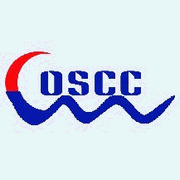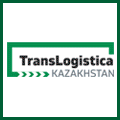The European Sea Ports Organisation (ESPO) is very much concerned about the Commission’s plans for the future EU budget. The Commission is preparing the ground for a complete reform of the EU budget, whereby a large part of the transport funding is brought under a single funding plan per Member State. This would limit the transport funding under direct EU management to the big cross border projects, such as Rail Baltica, the Fehmarnbelt tunnel or the Lyon-Turin rail connection.
Europe’s ports urge the Commission to continue and further strengthen the dedicated European transport infrastructure funding instrument, currently known as the Connecting Europe facility (CEF), and tune it better to ports and their actors’ needs. Such instrument is the only effective way to ensure the completion of a seamless and well-functioning, state-of-the-art European Transport Network, which serves as the backbone and enabler of Europe’s internal market. A well-functioning transport network is also fundamental for strengthening Europe’s resilience and enhancing its military preparedness.
The Commission’s plan to bring transport and port investments under national single plans runs counter to the need for common assessment and more European planning as put forward in the Draghi report. While ESPO understands that the national single plans will have to meet strict criteria and follow EU priorities, the intended approach weakens European coordination of infrastructure across Europe and risks to jeopardise the level playing field between Member States.
In fact, an approach based on national envelopes risks bringing transport policy back to the 80’s, with national priorities and a patchwork of 27 Member States and of even more regions. In the absence of sufficient earmarking for ports and important projects taking place in a port context (such as those related to the energy transition), transport and in particular port investments risk to be neglected in the single plans in favour of politically more attractive priorities. The end of CEF funding or any similar transport infrastructure funding instrument would mean that ports have to comply with the strict requirements foreseen in the revised TEN-T policy, while facing a situation where funding opportunities and long-term investment stability are being put at risk and will hinge on (changing) priorities of (changing) national governments. This will not be conducive to maintaining coherent visions along transport corridors, which are intended to connect the economies of one entity, the European Union, and help to compete with other global economic powers. It should also not be forgotten that Member States have different state structures and port management and ownership are organised on different state levels, which have consequences for port funding conditions and accessibility. Moreover, by linking the national funding for transport (and ports) to a reform agenda in certain (other) areas, the Commission could create a cross-conditionality that could dangerously put at risk the investment progress of ports, whereas they do not have any responsibility nor competence to push for these reforms. Any future plans of the Commission should avoid that port funding could be held back for non-compliance of the reforms at Member State level.
Ports in Europe believe that transport investment plans and projects should in essence be checked on their compliance with the priorities put forward in Europe’s TEN-T policy and should be prioritised on the basis of bringing most EU added value. Ports are (often) not ‘cross-border’ entities in the strict sense, yet ports have a crucial cross-border impact. They are usually the starting point of cross-border intermodal operations and they service cross-border maritime transport flows, the local market where they are positioned and many cross-border hinterland connections too. While being important, the “cross border” element must not be perceived as the only indicator of EU added value. The transport sector is a network industry. A missing link or underperforming transport infrastructure in one region impacts the whole network and thus undermines a proper functioning of Europe’s economy and society. Vice versa, a well performing port ensures connectivity and brings added value far beyond the national borders of a country. As already stated by the Commission in 2003, transport connections are the arteries of Europe’s internal market. If they under-perform, so does the rest of the economy. If they are efficient, all other sectors benefit. That’s why transport policy and funding need to be based on a European approach.
A dedicated and strengthened EU transport infrastructure instrument, with a dedicated/earmarked and sufficient envelope for ports, is crucial for Europe’s port sector. 327 European ports are an integral part of Europe’s infrastructure policy. The importance, role and responsibilities of Europe’s ports are increasing. On top of being the gateways to trade and logistic hubs, maritime ports are playing a crucial role in the supply of energy and are thus both partner in the energy transition and ensuring Europe’s energy security. Ports are feeding both maritime and land transport and are hubs for the energy supply to the other modes of transport. The decarbonisation of the maritime sector will not happen without remarkable investments in the supply of alternative, low-carbon fuels in ports across Europe. As clusters of industry, ports are to be essential in ensuring the supply chains that come with boosting net-zero and clean industries in Europe. Finally, ports are playing a significant role in enhancing Europe’s military preparedness. As mission-driven entities, Europe’s ports are engaged to do whatever they can to help building a strong and resilient Europe. This multifaceted role of ports comes with increasing investment needs, now amounting to 80 billion EUR for the next ten years, according to ESPO’s latest investment study (maintenance and pure private investments excluded). Many of these investments create high added value for society, yet come with low, slow or risky returns on investments and therefore jeopardise a successful roll-out of the projects.
To be fully effective, the future EU transport infrastructure instrument should:
- Receive a much stronger dedicated port budget;
- Make sure that a dedicated and sufficient part of the budget will support those port projects that are crucial from a societal point of view and that can help ports to deliver on a green, digital, secure and competitive Europe;
- Ensure that the cross-border criterium in the strict sense is not a sine qua non condition to receive funding;
- Be more transparent in its project selection and on the role of the Member States in this process;
- Structure calls by modes, not by overarching topics in order to improve clarity and avoid overlapping scopes;
- And reduce the complexity and administrative burden in the application processes.
Source, ESPO



.jpg)






